Computer Electronic
Pixel 8’s Photographic Revolution: The AI-Enhanced World of Unreal Photos

Pixel 8’s Photographic Revolution: The AI-Enhanced World of Unreal Photos
Introduction: The Author’s Journey into AI Photography
Welcome to the future of photography! I’m a tech aficionado and photography enthusiast, with a penchant for unraveling the latest innovations in the world of smartphone cameras. Today, I invite you to join me on an exciting journey into the realm of AI-enhanced photography, where pixels and algorithms meet artistry. In this article, I’ll introduce you to Google’s Pixel 8, a groundbreaking device that’s rewriting the rules of smartphone photography.
The Evolution of Smartphone Cameras
Before we delve into the Pixel 8’s AI-powered marvels, let’s reflect on the incredible journey of smartphone cameras over the past half-decade. Advances in computational photography have propelled us into an era where anyone can create pictures that rival professional photographers. This metamorphosis has been made possible through a fusion of complex algorithms, artificial intelligence, and high-performance sensors. The result? A world where your smartphone captures breathtaking, lifelike images.
Pixel 8: The Game Changer
Google, a pioneering force in smartphone photography, is all set to unveil the Pixel 8. This $700 gem isn’t just another phone with standard photo editing tools. It’s a game changer that introduces AI-powered photo editing like never before. The Pixel 8 uses AI to craft or erase elements in your photos, delivering that elusive perfect shot.
Pixel 8’s Magic Editor: Creating the Unreal
Imagine capturing a photo where a friend’s shoulder accidentally gets cropped out. With the Pixel 8’s Magic Editor, you can elegantly reposition your friend within the frame, while the AI seamlessly handles the rest, ensuring a flawless image.
Erasing Photobombers with a Tap
We’ve all been there – you take a fantastic photo of a friend in front of a historic landmark, only to have it marred by intrusive photobombers. The Pixel 8’s editing tool empowers you to select and eliminate these unwanted guests in seconds, while the AI effortlessly reconstructs the background.
Bringing AI Editing to the Masses
Google has ingeniously incorporated these AI editing tools into Google Photos, accessible to both Android and iPhone users, boasting over a billion users. The Pixel 8 is at the forefront of making AI editing widely available, paving the way for other devices to follow suit.
The Ethical Dilemma: Boon or Bane?
The advent of generative AI in smartphone photography has stirred both excitement and concerns. It signals a profound shift in how we perceive photography, leading us to question the authenticity of the images we encounter and share, even those of our nearest and dearest.
Exploring AI Image Enhancements
To unlock the potential of the Pixel 8, I embarked on a journey to explore its AI editing capabilities. Armed with my camera, I captured a series of images, revealing the promises and challenges of this technology.
Erasing the Unwanted: A Surprising Success
One of my images featured a picturesque garden scene, momentarily disrupted by a garden gnome that had wandered into the frame. Using the Pixel 8’s Magic Editor, I outlined the gnome, and the AI’s performance was truly remarkable. It seamlessly transformed the gnome-infested scene into an enchanting garden.
A Shifting Perspective: Mixed Results
In another scenario, I captured a mesmerizing sunset over a serene lake, but the lake’s edge appeared slightly skewed. My endeavor to correct the perspective yielded mixed results, highlighting the AI’s capabilities but also its limitations.
An Unexpected Transformation: The AI’s Creative Flair
Perhaps the most intriguing experiment involved a photo where a brilliant sunset had inadvertently obscured a sailboat. I wondered if the AI could resurrect the sailboat. The AI’s interpretation, though unconventional, was incredibly imaginative—it transformed the sailboat into a majestic galleon with billowing sails.
The “Regenerate” Button
In cases where the initial results were less than ideal, Google offers a “Regenerate” button for a second attempt. Yet, it’s essential to acknowledge that the technology is in its early stages, and perfection remains elusive.
Vanishing Act: An Unsettling Experience
In another image, a lively street scene was marred by the presence of intrusive pigeons. Using AI to erase them, the results were effective but left me with an uncanny sensation, reminiscent of a certain scene from a popular movie.
Acknowledging the Evolving Technology
Google recognizes that these AI editing tools are a work in progress. In their statement, they emphasize the need for user feedback to continually improve their models.
To Use or Not to Use
My verdict is clear: I’m cautious about prominently featuring these AI editing tools in a flagship smartphone’s Photos app, especially in their current imperfect state. As the technology evolves, we must grapple with broader ethical concerns regarding artificial images.
FAQs
- What are the potential applications of AI-powered photo editing beyond personal photography?
AI-powered photo editing has a broad range of applications, including professional photography, marketing, and design. It can streamline the image editing process, making it more efficient for various industries. - Do other smartphone brands offer similar AI-powered photo editing capabilities?
While Google’s Pixel 8 is a notable leader in AI photography, other smartphone brands have started to incorporate AI into their camera features. For instance, brands like Apple and Samsung have their own AI-driven enhancements. However, the extent and effectiveness of these features may vary. - How can AI-enhanced photography impact the world of social media and online sharing?
The use of AI to create or alter photos can significantly impact how content is shared on social media. It raises questions about the authenticity of images, potentially influencing how users perceive and engage with content on platforms like Instagram, Facebook, and TikTok. - Are there any privacy concerns related to AI photography tools?
The use of AI editing tools can inadvertently capture or manipulate sensitive information in photos. Privacy concerns arise when the technology is used to change the context or content of images, potentially impacting the privacy of individuals featured in the photos. - How do AI-enhanced photos affect copyright and intellectual property issues?
AI editing tools can blur the lines of copyright and intellectual property when they are used to create or modify images. It’s essential to be aware of the legal implications of altering or sharing AI-enhanced photos that may contain copyrighted elements. - Can AI editing be reversed to restore the original image?
Most AI editing tools, including those on the Pixel 8, offer the option to undo or revert changes made to images. However, the extent to which the original image can be fully restored depends on the complexity of the edits applied. - Are there any creative benefits to using AI editing tools in photography?
Beyond the ethical considerations, AI editing tools can be used creatively to transform ordinary photos into artistic or imaginative creations. It opens up new possibilities for creative expression in photography.

Image by: https://en.techwar.gr/159132/i-leitourgia-best-take-tou-google-pixel-8-pro-tha-diorthosei-tis-omadikes-sas-fotografies-kai-mou-aresei/
Conclusion:
Balancing Creativity and Authenticity
Smartphones have transformed photography, offering powerful AI tools that can create or modify images with astounding precision. While this technology is a game-changer for photography enthusiasts, it also sparks critical questions about image authenticity. The Pixel 8’s AI editing tools provide a glimpse into the future of smartphone photography, but it’s our responsibility to use them thoughtfully and ethically. As we step into this new era of generative AI, let’s strike a balance between creativity and authenticity, preserving the integrity of our visual storytelling. The age of unreal photos is here, and how we navigate it will define our visual narrative.
Computer Electronic
Electric Cars Revolution: Tesla’s Impact on Sustainable Transportation
Computer Electronic
Google: Revolutionizing Search Engines and Beyond | A Story of Innovation and Impact
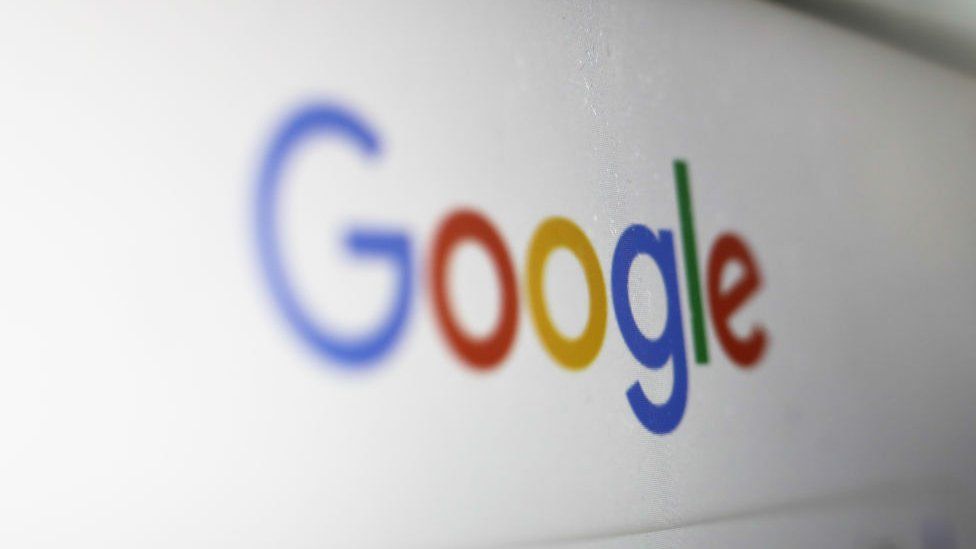
Introduction
In the vast landscape of the internet, where information is both abundant and elusive, search engines serve as the guiding light, aiding us in navigating the digital maze. Among these, Google stands as a monumental force, a technological behemoth that redefined the way we access information. Founded by Larry Page and Sergey Brin in the late 1990s, Google emerged as a humble search engine and swiftly ascended to become the primary gateway to the vast expanse of the World Wide Web.
The Birth of an Idea
Larry Page and Sergey Brin, two graduate students at Stanford University, shared a vision to organize the immense volume of internet information. In 1996, they collaborated on a project called BackRub, which focused on measuring the relevance of web pages by examining the number of backlinks. This laid the groundwork for what would later evolve into Google. The following year, the concept took a concrete form as Page and Brin registered the domain name “Google.com.” The term “Google” itself is a play on the word “googol,” representing the vastness of information the search engine aimed to index.
The Google Algorithm
At the core of Google’s meteoric rise lies its revolutionary algorithm. Page and Brin introduced PageRank, a system that assessed the importance of web pages based on the number and quality of links pointing to them. This algorithm brought a paradigm shift in search engine technology, enabling users to find more relevant and trustworthy information quickly. The focus on relevance and quality propelled Google ahead of its competitors. While other search engines at the time relied on keyword density, Google’s PageRank algorithm prioritized content linked to by reputable sources, fundamentally altering the search engine landscape.
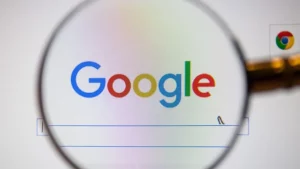
Image By:https://theconversation.com
Evolution and Expansion
Google’s ambition extended beyond merely indexing web pages. Acquisitions and developments diversified its offerings. Products like Gmail, Google Maps, YouTube, and the Android operating system became integral parts of everyday life, further cementing Google’s dominance. The introduction of AdWords in 2000 marked a pivotal moment. This advertising platform allowed businesses to display targeted ads alongside search results, shaping the digital marketing landscape and contributing significantly to Google’s revenue.
Cultural Impact
Google’s influence transcended technology; it became a cultural icon. The phrase “Google it” seamlessly integrated into daily vernacular, signifying the act of searching for information online. The company’s work culture, known for its innovation, employee perks, and the motto “Don’t be evil,” garnered attention and admiration globally.
Challenges and Controversies
However, Google’s ascent was not devoid of challenges. Antitrust concerns emerged as its dominance raised questions about fair competition. Accusations of manipulating search results for commercial gains surfaced, leading to regulatory scrutiny and debates on user privacy and data protection.
Global Reach and Social Responsibility
Google’s impact expanded globally, bridging gaps in information accessibility. Initiatives like Google’s philanthropic arm, Google.org, focused on using technology to address societal challenges, including education, healthcare, and environmental issues. Efforts like Google’s Crisis Response during natural disasters demonstrated the power of technology in aiding humanitarian efforts.
The Future of Google
As the digital landscape evolves, Google continues to innovate. Artificial intelligence, machine learning, and quantum computing are areas where Google invests heavily, aiming to revolutionize technology further. Ethical considerations regarding AI, privacy concerns, and maintaining its competitive edge amid a changing technological paradigm remain key challenges.

Image By:https://theconversation.com
Conclusion
The story of Google, from its humble beginnings in a Stanford dorm room to its current status as a tech giant, is a testament to the transformative power of innovation. Its impact on the internet, technology, and society at large is undeniable. Larry Page and Sergey Brin’s vision not only revolutionized search engines but also reshaped how we connect, gather information, and perceive the world. In essence, Google’s journey represents the relentless pursuit of organizing the world’s information and making it universally accessible and useful—a vision that continues to shape our digital existence. Through constant evolution and adaptation, Google remains a driving force in the ever-changing landscape of the World Wide Web, poised to navigate the uncharted territories of technology and human connectivity.
Computer Electronic
Enhancing Wireless Networks: Cross-Layer Optimization for SWIPT-NOMA Energy Efficiency
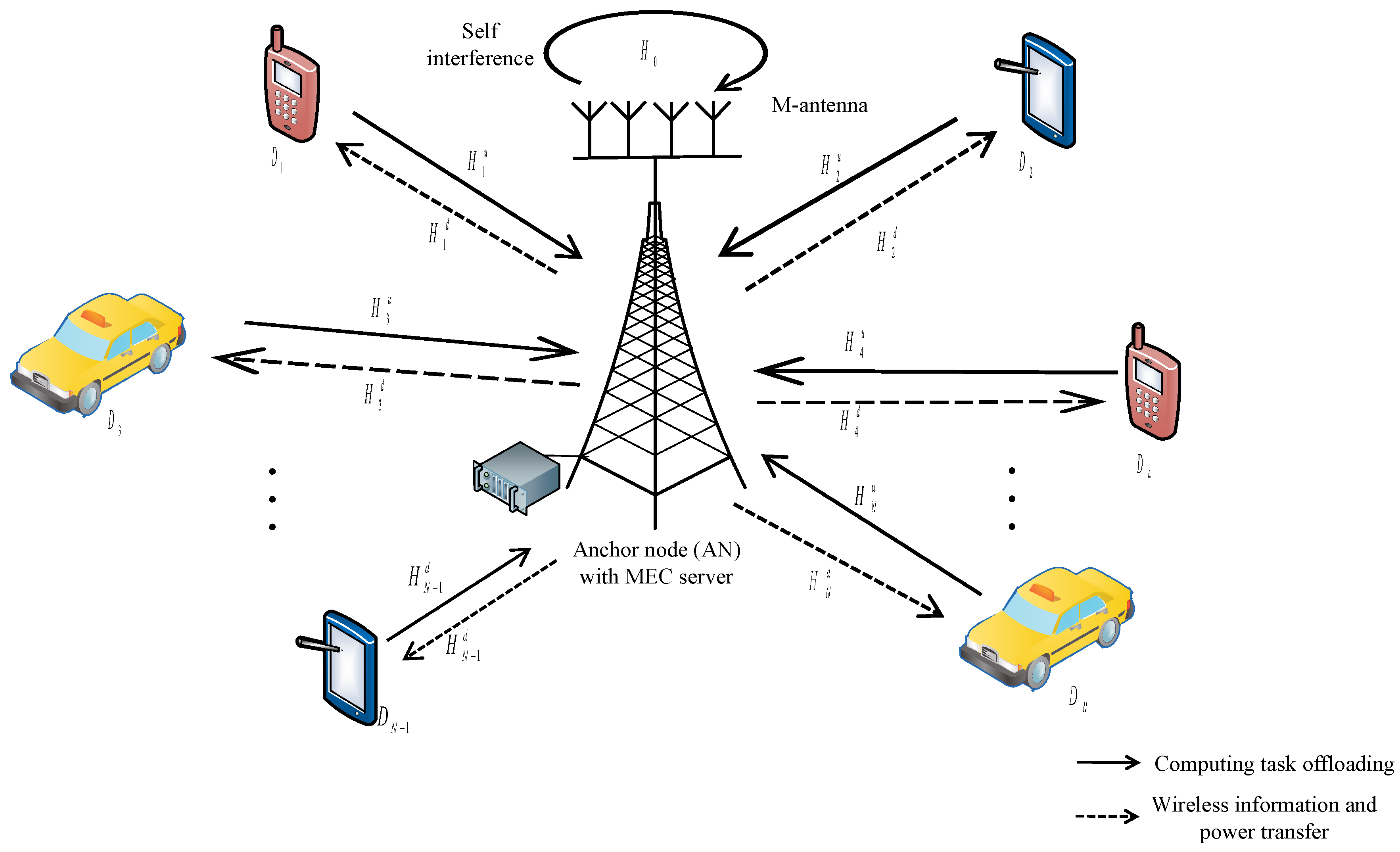
Introduction
Simultaneous Wireless Information and Power Transfer (SWIPT) and Non-Orthogonal Multiple Access (NOMA) are two promising technologies in wireless communication systems. SWIPT enables devices to harvest energy from radio frequency signals, while NOMA allows multiple users to share the same spectrum resources simultaneously. Integrating these technologies can significantly enhance the energy efficiency and spectral efficiency of wireless networks. This article aims to explore cross-layer optimization strategies to improve energy efficiency in SWIPT-NOMA systems.
Understanding SWIPT and NOMA
SWIPT enables devices to perform two essential functions simultaneously: data reception and energy harvesting. By utilizing power beacons or ambient radio frequency signals, devices can harvest energy from the received signals using energy harvesting circuits. NOMA, on the other hand, allows multiple users to share the same frequency band and time resources by allocating different power levels or codebooks, enabling simultaneous transmission and reception.
Challenges and Opportunities
The integration of SWIPT and NOMA introduces various challenges and opportunities. One of the primary challenges is optimizing system performance while considering conflicting objectives such as maximizing energy efficiency, spectral efficiency, and fairness among users. Moreover, the non-linear nature of energy harvesting and the complexity of NOMA resource allocation require sophisticated optimization techniques.
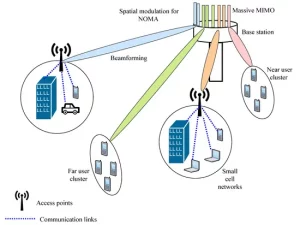
Image By:https://www.mdpi.com
Cross-Layer Optimization Strategies
Resource Allocation
Designing efficient resource allocation algorithms that consider both energy harvesting and data transmission in SWIPT-NOMA systems is crucial. Cross-layer optimization involving power allocation, time allocation, and user scheduling can maximize the overall system performance. Advanced algorithms, including convex optimization and machine learning-based approaches, can be employed for effective resource allocation.
Beamforming and Signal Processing
Utilizing beamforming techniques to direct signals towards intended users enhances the energy transfer efficiency in SWIPT. Cross-layer optimization of beamforming weights and signal processing techniques, considering both energy harvesting and data decoding, can significantly improve system performance.
Hybrid Access Schemes
Integrating NOMA with other multiple access schemes, such as orthogonal multiple access (OMA), in a hybrid manner can provide a balance between system complexity and performance. Hybrid access schemes can optimize the trade-off between energy efficiency and spectral efficiency by dynamically allocating resources based on channel conditions.
Reinforcement Learning-based Optimization
Leveraging reinforcement learning algorithms can enable dynamic adaptation and learning in SWIPT-NOMA systems. By continuously learning from environmental feedback, these algorithms can optimize resource allocation, user scheduling, and power control, leading to improved energy efficiency.
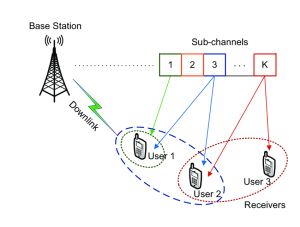
Image By:https://www.researchgate.net
Conclusion
The integration of SWIPT and NOMA presents a promising approach to enhance the energy efficiency of wireless communication systems. Cross-layer optimization strategies involving resource allocation, beamforming, hybrid access schemes, and reinforcement learning-based approaches play a pivotal role in maximizing the benefits of these technologies. Future research in this area should focus on developing more robust and adaptive optimization techniques to address the dynamic and diverse nature of wireless networks.
-
Business2 years ago
Cybersecurity Consulting Company SequelNet Provides Critical IT Support Services to Medical Billing Firm, Medical Optimum
-
Business2 years ago
Team Communication Software Transforms Operations at Finance Innovate
-
Business2 years ago
Project Management Tool Transforms Long Island Business
-
Business2 years ago
How Alleviate Poverty Utilized IPPBX’s All-in-One Solution to Transform Lives in New York City
-
health2 years ago
Breast Cancer: The Imperative Role of Mammograms in Screening and Early Detection
-
Sports2 years ago
Unstoppable Collaboration: D.C.’s Citi Open and Silicon Valley Classic Unite to Propel Women’s Tennis to New Heights
-
Art /Entertainment2 years ago
Embracing Renewal: Sizdabedar Celebrations Unite Iranians in New York’s Eisenhower Park
-
Finance2 years ago
The Benefits of Starting a Side Hustle for Financial Freedom












































